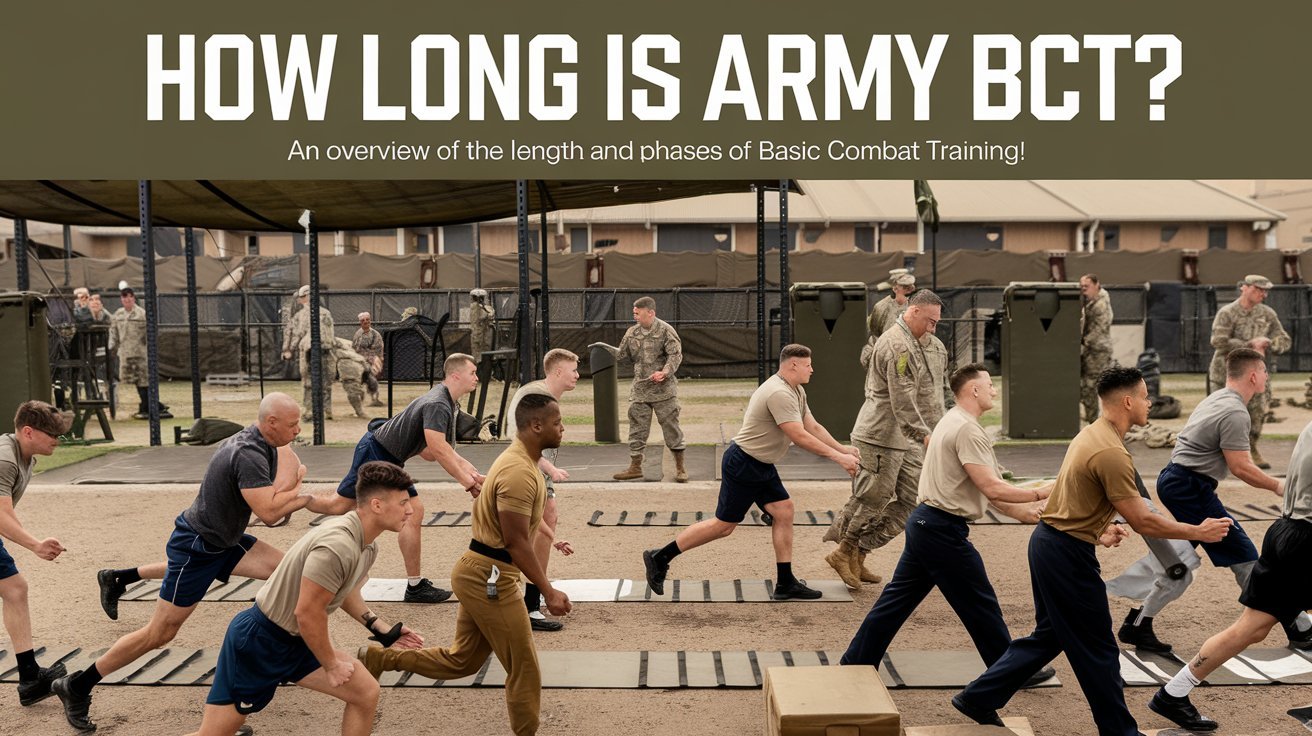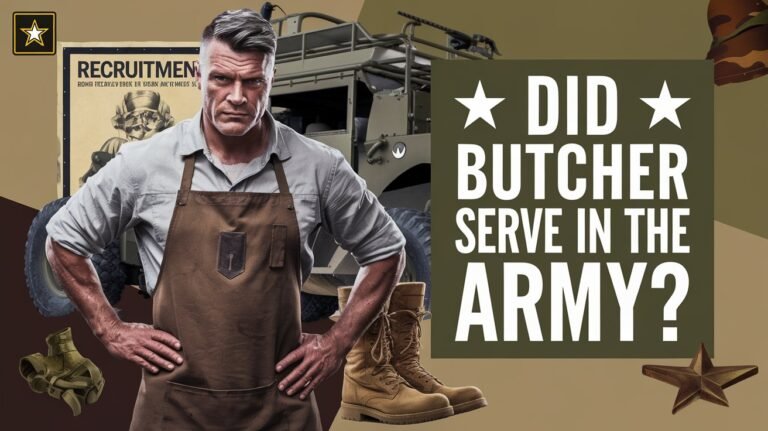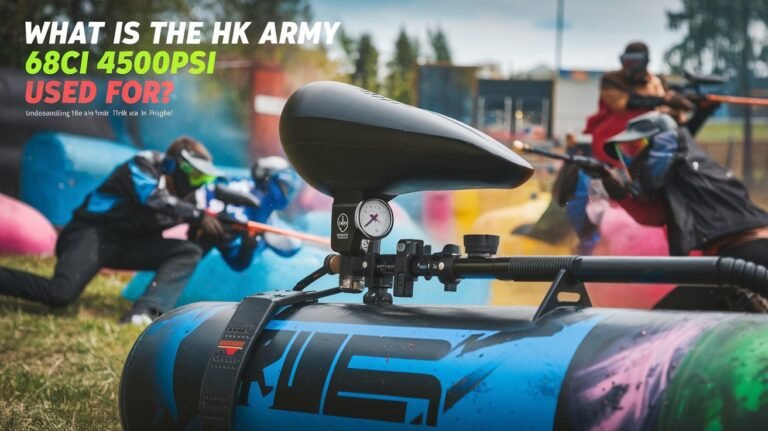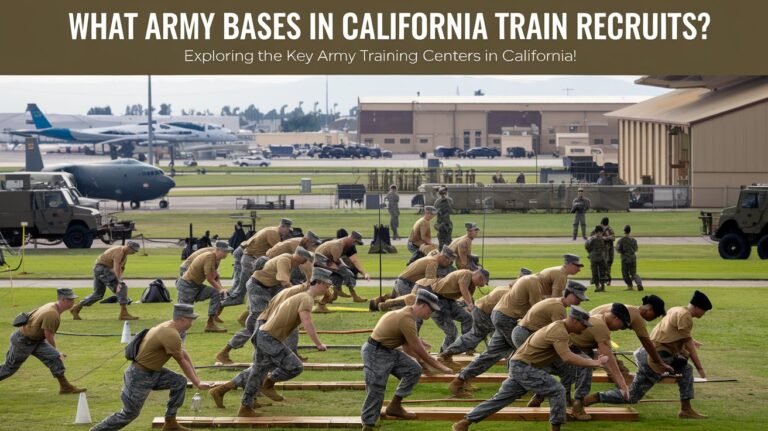How Long Is Army Bct: Duration And Requirements

Ever thought about what it takes to become a soldier? Army Basic Combat Training (BCT) is the answer. It’s a 10-week program that teaches recruits the skills they need to succeed in the U.S. Army. But how long does this journey last, and what can you expect? Let’s explore the complete guide to Army BCT’s length and details.
Key Takeaways
- Army Basic Combat Training is a 10-week program that prepares civilians for life as a soldier
- The training is divided into three distinct phases: Red, White, and Blue, each focusing on different aspects of military development
- Recruits undergo a range of physical, mental, and tactical exercises to build endurance, sharpen marksmanship, and enhance confidence
- BCT takes place at four primary locations across the United States, ensuring a standardized experience for all enlisted members
- Successful completion of the 10-week BCT program marks the start of a soldier’s career, with opportunities for further specialized training and advancement
Basic Combat Training Duration Overview
The U.S. Army’s Basic Combat Training (BCT) is a 10-week program. It turns civilian recruits into disciplined soldiers. The training is split into three phases: Red, White, and Blue, each lasting about three weeks.
Standard Training Timeline
The BCT course has a set timeline to develop recruits’ skills. It starts with the Yellow Phase, focusing on Army values and physical fitness. Then, the Red Phase teaches basic soldier skills like weapons handling.
The White Phase focuses on combat preparation, with marksmanship training. The Blue Phase introduces advanced training.
Graduation Requirements
- Pass physical fitness tests, including the Army Physical Fitness Test (APFT)
- Demonstrate proficiency in basic soldier skills, such as weapons handling and field craft
- Qualify on their assigned weapons systems
Training Structure and Organization
The BCT course builds skills step by step. It starts with basics and moves to complex tasks. Drill Sergeants lead and train recruits, pushing them to meet Army standards.
The training is tough, both physically and mentally. It prepares recruits for military life.
How Long Is Army BCT
Army Basic Combat Training (BCT) is a 10-week program. It prepares new recruits for military life. The training, including in-processing and out-processing, can last a bit longer than 10 weeks. But, this time frame is the same for all Army BCT locations.
The BCT program starts with a “Week Zero” for in-processing. Recruits do administrative tasks and get medical and physical checks. Then, they spend nine weeks learning about Army values and combat tactics.
- Army Basic Combat Training (BCT) lasts 10 weeks in total.
- The training timeline includes a “Week Zero” for in-processing and 9 weeks of rigorous instruction.
- The overall duration, including reception and out-processing, may extend slightly beyond 10 weeks.
- This 10-week BCT length is consistent across all Army training locations.
Whether you’re curious about the army basic combat training duration, the bct length, or the military boot camp timeline, the Army’s Basic Combat Training program is a standard 10-week experience. It turns civilians into disciplined, capable soldiers.
Official Training Locations and Facilities
The U.S. Army has five main places for Basic Combat Training (BCT) across the country. These are Fort Benning, Fort Jackson, Fort Leonard Wood, Fort Sill, and Fort Knox. Each place is focused on different skills, helping recruits learn what they need for their jobs.
Fort Moore Training Center
Fort Moore is in Georgia and trains soldiers for infantry and armor jobs. It’s great for those starting their army training because it teaches important skills. These include how to fight in close spaces and how to use armor.
Fort Jackson Facilities
Fort Jackson in South Carolina is a key place for new Army soldiers. It has the latest training equipment and experienced drill sergeants. Both men and women come here to become tough and ready for battle.
Fort Leonard Wood Complex
Fort Leonard Wood is in Missouri and trains Military Police and Combat Engineers. It’s also where men and women train together. Female recruits get the same tough training as the men.
Physical Fitness Standards and Requirements
Being physically fit is key in the army recruit training cycle. Recruits must pass the Army Combat Fitness Test (ACFT) to finish Basic Combat Training (BCT).
The ACFT tests strength, power, speed, and endurance in six events. These include strength deadlift, standing power throw, hand-release push-ups, and more. Recruits need at least 60 points in each event to pass, totaling 360 points out of 600.
Recruits are tested in the first week of BCT, called “Week Zero.” They get chances to boost their scores during training. If they don’t meet standards, they might go to a fitness training company for extra help.
| ACFT Event | Minimum Passing Score | Maximum Score |
|---|---|---|
| Strength Deadlift | 60 points | 100 points |
| Standing Power Throw | 60 points | 100 points |
| Hand-Release Push-ups | 60 points | 100 points |
| Sprint-Drag-Carry | 60 points | 100 points |
| Leg Tuck or Plank | 60 points | 100 points |
| Two-Mile Run | 60 points | 100 points |
Passing the ACFT is vital for both new recruits and current soldiers. It makes sure they’re fit enough to do their jobs well and keep up with the army’s training and standards.
Yellow Phase Training Components
The Yellow Phase of Army Basic Combat Training is key. It turns recruits into disciplined, fit soldiers. This phase teaches the Army’s core values, improves physical fitness, and helps adapt to military life.
Core Army Values Implementation
Recruits learn the seven Army values: Loyalty, Duty, Respect, Selfless Service, Honor, Integrity, and Personal Courage. They learn these values through classes, group talks, and real-life examples. These values guide their actions and thoughts during training.
Initial Physical Conditioning
The Yellow Phase starts a tough physical training program. It aims to increase strength, endurance, and fitness. Exercises like planks, sit-ups, and push-ups are common. Recruits must do extra reps for small mistakes.
They should talk to a doctor before starting a workout plan. It’s important to warm up and cool down to avoid injuries.
Military Life Adaptation
Adjusting to military life is a big part of the Yellow Phase. Recruits get used to a strict daily routine. This includes three healthy meals, no snacks or alcohol, and a 4:30 AM to 9:00 PM sleep schedule.
They get about six and a half hours of sleep each night. Tobacco and related products are banned during Basic Training.
Red Phase Military Skills Development
The Red Phase is weeks 3-4 of the us army basic training schedule. It’s a key time for recruits to learn hands-on military skills. They start with the basics of their weapons, learn life-saving techniques, and improve in hand-to-hand combat.
Recruits get to know their standard-issue weapons, like the M16A2 or M4 carbine. They learn how to handle, maintain, and safely use them. This is the start of their marksmanship training in the White Phase.
They also get CLS training, which teaches them first aid for battlefield injuries. This skill could save lives in the field.
The Red Phase also covers unarmed combat techniques for close-quarters battles. A competition in week 2 lets one recruit from each platoon show off their skills. It builds camaraderie and healthy competition.
The phase ends with “The Hammer,” a field exercise. Recruits use their new skills in a simulated combat setting. This exercise helps them understand and prepare for future challenges.
| Week | Training Focus |
|---|---|
| Week 3 | Introduction to M16A2 or M4 Carbine Combat Lifesaver (CLS) Training Gas Chamber Exercise |
| Week 4 | Unarmed Combat Training Platoon Competition The Hammer Field Exercise |
The Red Phase is a critical step in the us army basic training schedule. It prepares recruits with the skills needed to succeed in later training and beyond. By the end, they are well on their way to becoming skilled soldiers.
White Phase Combat Preparation
Recruits move into the White Phase after weeks of tough army infantry training timeframe. This phase lasts from weeks 5-7 of military boot camp timeline. It’s all about sharpening combat skills for frontline duties.
Marksmanship Training
Marksmanship training is key in the White Phase. Recruits spend three weeks improving their rifle skills. They learn to hit targets from different distances and positions.
They also practice fighting multiple targets and hand-to-hand combat.
Field Exercise Requirements
- The White Phase ends with a tough two-day, two-night field training called “The Anvil.”
- This test simulates real combat, pushing recruits to their limits.
- Passing “The Anvil” shows they’re ready for the next step in Basic Combat Training.
Combat Tactics Introduction
Recruits learn many combat tactics in the White Phase. They cover squad-level tactics, urban warfare, and how to handle threats. This training prepares them for their future roles in the infantry.
| Training Phase | Duration | Key Focus Areas |
|---|---|---|
| White Phase | Weeks 5-7 | Marksmanship and weapon maintenance Target engagement and priority Hand-to-hand combat development Field training exercise: “The Anvil” Introduction to combat tactics |
Blue Phase Advanced Training Elements
Soldiers are getting close to the end of their Army Basic Combat Training (BCT) when they reach the Blue Phase. This is the last and most challenging part of their training. It lasts for 3 weeks, from weeks 8 to 10. They prepare for the tough tasks they will face after graduation and when they go to their permanent duty stations.
In the Blue Phase, soldiers learn more about using machine guns and grenades. They build on the marksmanship skills they learned before. They also take part in “The Forge,” a multi-day field exercise. This exercise tests their physical fitness, soldier skills, and survival techniques learned in BCT.
The bct graduation date shows that they have finished this tough training program. It means they have the knowledge and skills needed to do well in their future military roles.
| Training Phase | Duration | Focus Areas |
|---|---|---|
| Blue Phase | Weeks 8-10 | Advanced weapons training (machine guns, grenades) Continued marksmanship practice Tactical maneuvering The Forge: multi-day field exercise |
Daily Schedule During Basic Training
The daily schedule in US Army Basic Combat Training (BCT) is strict and demanding. It starts early and goes all day. The goal is to turn recruits into disciplined soldiers.
Morning Routines
The day in BCT starts with a wake-up call at 4:30 AM. Recruits then do their morning hygiene and get ready for 5:00 AM formation. From 5:00 to 6:30 AM, they do physical training (PT) to build strength and agility.
Training Activities
After breakfast, the day is packed with training. This includes classroom lessons, weapons training, and field exercises. Lunch is at noon, followed by more training in the afternoon.
Evening Procedures
The evening is for cleaning the barracks and personal time. Lights out is at 9:00 PM. This ensures recruits get enough rest for the next day’s challenges.
| Time | Activity |
|---|---|
| 4:30 AM | Wake-up call |
| 5:00 AM | Formation and physical training (PT) |
| 6:30 AM | Breakfast |
| 7:00 AM – 12:00 PM | Training activities (classroom, weapons, tactics, field exercises) |
| 12:00 PM | Lunch |
| 1:00 PM – 5:00 PM | Continued training activities |
| 5:00 PM | Dinner |
| 6:00 PM – 9:00 PM | Barracks cleaning, personal time |
| 9:00 PM | Lights out |
Military Pay During Basic Training
Recruits in the army recruit training cycle get a steady paycheck. This helps them cover their basic needs. The army bct, or Basic Combat Training, lasts 10 weeks.
They get paid on the 1st and 15th of each month. Starting as an E1, they earn about $20,170.80 a year. This means they get around $3,800 for the 10-week BCT period. Plus, they have their meals and housing covered.
Pay records start during Week Zero, the in-processing period. This ensures they get their pay right from the start. It helps them focus on learning military skills and staying fit during their army recruit training cycle.
Essential Items and Equipment List
Getting ready for army basic combat training means packing only what’s necessary. The goal is to get used to military life, not to carry a lot of stuff. You’ll need comfortable clothes like a shirt, three sets of underwear, pants, running shoes, and a jacket. Don’t forget a lock to keep your things safe.
You’ll also need toiletries like a toothbrush, shampoo, conditioner, soap, toothpaste, and shaving cream. Female trainees should bring enough feminine hygiene products for a week. Make sure you have your ID, social security card, and any medical records you might need.
But, there are things you can’t bring, like weapons, tobacco, alcohol, and non-prescription drugs. You can’t have expensive or bulky items either. You’re only allowed $100 in cash, and men must shave every day. Shower shoes are a must, and there are rules about wristwatches. Packing smartly will help you stay focused on your training and get ready for what’s ahead.
FAQ
How long does Army Basic Combat Training (BCT) last?
Army Basic Combat Training (BCT) is a 10-week program. It turns civilians into soldiers. The training includes physical fitness, military skills, and Army values.
What are the different phases of BCT?
BCT has three main phases: Red, White, and Blue. Each phase lasts about three weeks. They focus on different soldier development aspects.
Where does Army BCT take place?
Army BCT happens at four locations. These are Fort Moore (Georgia), Fort Jackson (South Carolina), Fort Leonard Wood (Missouri), and Fort Sill (Oklahoma). Each place specializes in different training areas.
What are the physical fitness requirements for BCT?
Recruits must pass the Army Combat Fitness Test (ACFT). It includes six events: strength deadlift, standing power throw, hand-release push-ups, sprint-drag-carry, leg tuck or plank, and a two-mile run.
What is the daily schedule like during BCT?
BCT’s daily schedule is tough and follows a strict plan. Days start at 4:30 AM with personal hygiene and getting ready for 5:00 AM formation. From 5:00 to 6:30 AM, there’s Physical Training (PT). Then, the day is filled with various training activities.
How much are recruits paid during BCT?
Recruits earn money during BCT. An E1, the starting rank, makes about $20,170.80 a year. This is roughly $3,800 for the 10-week BCT period. They also get meals and housing.
What personal items are allowed during BCT?
Recruits should bring only a few personal items to BCT. These include comfy civilian clothes, white underwear, athletic socks, and running shoes. They also need a combination lock or padlock. But, they can’t bring weapons, tobacco, alcohol, non-prescription drugs, or expensive items.






